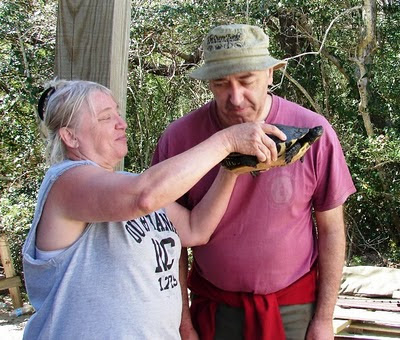As a requirement for receiving the Ancestor Approved Award is to publish a report on 10 persons connected with the Lost Colony, I am starting with Sir Walter Raleigh. Though he never set foot on Roanoke Island himself, the idea was his brainchild and he furnished much of the financing. The settlers were to establish the Citee of Raleigh.
Sir Walter Raleigh
Biography, Timeline & Facts about the famous explorer, explorations & voyages in the Age of Exploration
Facts, Biography, Timeline & History about the life of Sir Walter Raleigh - Explorer, Poet and Courtier
1554 Sir Walter Raleigh was born in Hayes Barton in Devonshire
Part of a leading Protestant family
Sir Walter Raleigh hated the Catholic Church
Distant relative of Francis Drake
On August 24 1572 Raleigh witnessed the St Bartholomew's Day massacre where French Protestants were massacred by French Catholics in Paris
A member of the Middle Temple in 1575
He was nearly 6 foot tall
In 1578 Sir Walter Raleigh sails with his half brother, Sir Humphrey Gilbert, to America
Raleigh captains 'The Falcon'
Raleigh has an illegitimate daughter by a local woman called Alice Goold
In 1580 Raleigh helps to put down the Irish rebellion, is knighted and becomes a favourite of Queen Elizabeth. He becomes extremely wealthy
Sir Walter Raleigh spoke with a soft Devonshire accent
He was noted for his courtly manners and was reputed to have placed his cloak over a puddle in order to prevent Queen Elizabeth I from muddying her shoes. This is not confirmed however a cloak was included in his coat of arms
Sir Walter Raleigh was a true man of the renaissance and a brilliant poet
He founded the secret society called "The School of Night" which was attended by fellow highly prominent Elizabethans - new beliefs were discussed and it is closely related to the mysterious Rosicrucian movement
March 25, 1584 - Walter Raleigh receives the patent to explore and settle in North America
1584: Sir Walter Raleigh's fleet of seven vessels under Richard Grenville and Ralph Lane, with 108 men, reach Roanoke Island in June.
1584 June 4, Virginia colony of Roanoke Island established by Sir Walter Raleigh.
1585 January 6: Queen Elizabeth knights Walter Raleigh and makes him governor of the new territory discovered by Amadas and Barlowe. Raleigh names it "Virginia" in her honor.
1586 - The Babington Plot - Sir Francis Walsingham and Sir Walter Raleigh discover plot to assassinate Queen Elizabeth and replace her with Mary Queen of Scots (called the Babington Plot)
July 22, 1587 - Sir Walter Raleigh backs the first English Colony in North America (North Carolina) led by John White to the English Roanoke Colony
1587 August 18, Virginia Dare born in Roanoke colony , the first English child born in North America
1588 Raleigh donated "Ark Royal" to the English navy which was chosen to lead the English fleet against the Armada. Sir Walter Raleigh & Sir Richard Grenville were responsible for the joint defence of Devon and Cornwall against the expected Spanish Armada. The land-based soldiers did not have the opportunity to fight the Spanish.
1589: Sir Walter Raleigh & Sir Richard Grenville guard the sea approaches to Ireland
1592 Raleigh falls out of favour with Elizabeth when she discovers that he has married one of her maids called Bessie Throckmorton
The Queen ordered that Sir Walter Raleigh is placed in the Tower of London but he was released when one of his ships brought back a huge treasure on the captured Spanish ship "Madre De Dios"
6 February 1595 - Sir Walter Raleigh leaves England to sail to the New World to search for the city of El Dorado (the city of gold)
1595 Sir Walter Raleigh explores the Orinoco
24 March 1603 - Queen Elizabeth I dies and is succeeded by King James, the son of Mary Queen of Scots
1603 King James, eager to make peace with the Spanish, imprisons Sir Walter Raleigh in the Tower of London on charges of treason
In 1612 King James releases Raleigh, who promises to give King James a fortune if he allows him to return to Guiana
In 1616 Raleigh travels to Guiana but his mission fails and he attacks a Spanish settlement
1618 Sir Walter Raleigh is beheaded for attacking the Spanish.
This blog is © History Chasers
Click here to view all recent Searching for the Lost Colony DNA Blog posts











































